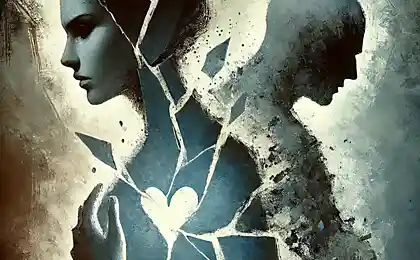855
Not superuspeshnost and mistrust and fear of betrayal?

For hundreds of thousands of causes movement of people of the Stone Age were natural or demographic factors. Cooling or warming, population growth - that's what caused the huge mass of people in motion. These processes are not fast, so the first settlement of people around the world has been slow. However, about 100 thousand years ago, there is something such that dramatically speeds up the process and expanding the geography of migrations. What was it?
Dr. Penny Spaykins (Penny Spikins) of the Department of Archaeology of the University of York (United Kingdom) said that no demographic or environmental factors can not explain the scale and speed of migrations that took place about 100 thousand years ago, and after that. She notes that people did not stop any danger on the road or natural barriers.
Man inhabits cold Nordic area, crosses the great rivers, deserts, tundra and jungle, crosses the sea (for example, to get to Australia or the Pacific Islands). Why? What makes people to overcome all obstacles and go who knows where?
Penny Spaykins thinks he knows the answer to this question. In an article recently published in the journal Open Quaternary, she speculated: people moved mistrust and fear of betrayal.
She says that to describe the time commitment of people in relation to each other are becoming increasingly important for survival. The growth of the importance of this factor in human relations could not but lead to a reverse process - an increase in people who are not in compliance with commitments. Of course, people who are interested in its survival, should have to condemn and punish "renegades».
Those, in turn, could take revenge. Maybe distrust of former friends, the fear of revenge from them and move people? Perhaps it is because of mistrust and revenge, people tried to escape from his attackers as far as possible, crossing huge spaces and overcoming difficulties, says the archaeologist.
"Pissed former friend, comrade or group of people with poisoned arrows were a good motivation to quit and to overcome all the dangers," - says Penny Spaykins. She noted that human settlement around the world is often seen as a sign of the success of our species. Meanwhile, for the mass migration could be another "dark side" of human nature.
In their paper, the researchers actively using references to ethnographic studies, but keep in mind that directly carry the analogy in such remote antiquity is impossible. We can hardly imagine what was going on in the minds of the people of the Stone Age, poorly understand what their world was that they felt and experienced. Details of modern traditional societies, of course, let us try to penetrate into this area, but such attempts will always remain hypothetical, prove their truth is very difficult, if not impossible.
Recently, a few studies in which the authors argue that the dispersal of modern human species (Homo sapiens) occurred earlier than previously thought. So, based on genetic and anthropological analyzes, an international team of scientists led by Professor Charvát Katerina (Katerina Harvati) from the University of Tübingen (Germany) reported that the "exodus" of people from Africa took place about 130 thousand years ago. And at first they moved through the Arabian Peninsula to Australia and the western Pacific. Much later, around 50 thousand years ago, another group of people left Africa and headed for the Northern Eurasia.
In favor of the earlier "Exodus" made and researchers Bay Christopher (Christopher Bae), paleoanthropologists from the University of Hawaii at Manoa, and Wang Wei (Wei Wang) from the Museum of nationalities in Guangxi Nanning. They relied on the new findings: in the cave site in southern China found two teeth that date back to the time interval between 70 and 126 thousand years ago.
The picture is completed and the work of other regions. In particular, the results of eight years of excavations at Jebel Faya (Jebel Faya, United Arab Emirates), which is conducted by Hans-Peter Irpman (Hans-Peter Uerpmann) from the University of Tübingen (Germany). Archeologists have analyzed the stone tools found at Jebel Faya, and concluded that the technology manufacture makes them similar to the findings derived from the territory of East Africa. At the same time artifacts from the UAE were very different from the guns made by north in the mountains of Iran and the Levant. These circumstances allowed the researchers to suggest that people could appear on the Arabian Peninsula for 125 thousand years ago.
However, these findings are scarce, and most researchers adhere to the traditional, well-established point of view.
Your text to link ...























